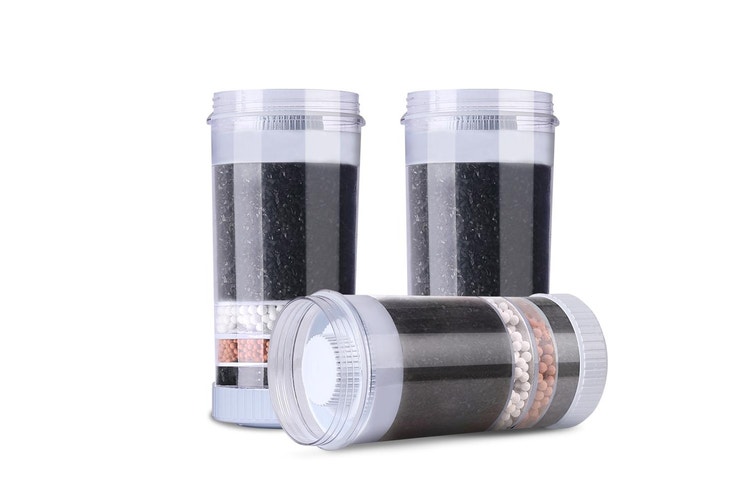Contents
- 1 Introduction
- 2 Understanding the FDM Process
- 3 Material Landscape: From Commodity Plastics to High-Performance Polymers
- 4 Designing for FDM: Best Practices and Technical Constraints
- 5 Post-Processing and Surface Enhancement
- 6 FDM vs. Other Additive Technologies
- 7 Industrial Use Cases
- 8 Advantages and Limitations
- 9 Conclusion
Introduction
Fused Deposition Modeling (FDM), also known as Fused Filament Fabrication (FFF), remains one of the most accessible and adaptable additive manufacturing technologies in the engineering world. Initially embraced for rapid prototyping, FDM has since evolved into a viable solution for low-volume production, custom tooling, jigs and fixtures, and in select cases, even functional end-use components. This concise guide distills the core technical principles of FDM, offering engineers a deeper understanding of how to apply it effectively, where it fits into a broader manufacturing strategy, and how it compares to other 3D printing processes.
Understanding the FDM Process
At its core, FDM is a thermoplastic extrusion process. A continuous spool of filament—typically 1.75 mm or 2.85 mm in diameter—is fed into a heated print head, where it is softened and extruded through a nozzle. The molten material is deposited layer by layer onto a build platform in paths defined by a sliced digital model, gradually building up the geometry of the part.
As each new layer is deposited, it thermally fuses with the previous layer, forming a cohesive structure. Cooling is an integral part of the process, and depending on the material, may require active management through part cooling fans or heated build chambers. The anisotropic nature of the layering means mechanical properties differ significantly between the horizontal plane and the Z-axis, making part orientation and infill strategy essential considerations.
Material Landscape: From Commodity Plastics to High-Performance Polymers
One of FDM’s defining strengths is its compatibility with a wide spectrum of thermoplastics. Engineers can choose from low-cost prototyping materials to engineering-grade and high-performance polymers tailored to specific mechanical, thermal, or chemical demands.
Common materials include:
- PLA for low-warp, easy prototyping
- ABS for stronger parts with good thermal resistance and post-processing options
- PETG as a chemical-resistant, semi-flexible alternative to ABS
- ASA for outdoor use thanks to its UV stability
For industrial applications, materials like nylon (PA12 or PA6) provide high strength and durability, while TPU allows for flexible, impact-absorbing parts. PEI (ULTEM 9085/1010) and PEKK are suitable for demanding aerospace or medical applications, offering high thermal resistance, flame retardance, and chemical stability. These high-temperature polymers require specialized hardware capable of maintaining stable extrusion and chamber temperatures.
Filled materials—particularly carbon fiber-reinforced variants—offer high stiffness-to-weight ratios and improved dimensional stability. These are popular for tooling applications and structural brackets where strength is critical but machining cost is prohibitive.
Designing for FDM: Best Practices and Technical Constraints
Despite its accessibility, FDM is highly sensitive to geometry and part orientation. Engineers must design within specific guidelines to ensure part accuracy, structural integrity, and manufacturability.
Layer height, wall thickness, infill density, and nozzle size all affect surface quality, strength, and print time. A common resolution for industrial FDM parts ranges from 100 to 250 microns per layer. While thinner layers improve detail and reduce stair-stepping on angled surfaces, they significantly increase build times and may not materially improve part strength.
Wall thickness should exceed two extrusion widths (typically 0.8 mm or more) for reliable structures. Unsupported overhangs beyond 45 degrees from horizontal typically require support structures, while bridges are feasible over spans of 5–10 mm with good cooling and part tuning.
Hole tolerances can be unpredictable due to shrinkage and layer-based inaccuracies—engineers should assume holes will print undersized and plan for reaming or machining. Likewise, the Z-axis is mechanically weaker than X and Y due to poor inter-layer adhesion, so parts should be oriented to align mechanical loads with the plane of deposition whenever possible.
Post-Processing and Surface Enhancement
As-printed FDM parts have visible layer lines and typically matte or slightly textured surfaces. While cosmetic quality varies by material and printer, engineers should expect some level of finishing for functional or customer-facing parts.
Post-processing methods include manual sanding, media tumbling, vapor smoothing (especially for ABS), and painting or coating. Functional enhancements, such as machining holes to tolerance or bonding multiple components, are also common. Soluble or breakaway supports can ease cleanup but may require secondary steps in water baths or chemical solvents.
When used with care, post-processing allows FDM to produce clean, professional-quality parts suitable for light production or testing environments.
FDM vs. Other Additive Technologies
While FDM is not the most precise or fastest additive process, its cost-efficiency and material versatility make it ideal for many applications. Compared to stereolithography (SLA), selective laser sintering (SLS), or Multi Jet Fusion (MJF), FDM excels in affordability, simplicity, and hardware accessibility.
However, it falls short in certain areas:
- SLA offers superior resolution and surface finish for small, high-detail parts.
- SLS and MJF provide isotropic strength and eliminate the need for support structures.
- DMLS (Direct Metal Laser Sintering) enables metal part production but at significantly higher cost and complexity.
In short, FDM is best used where dimensional tolerance is moderate, cosmetic finish is secondary, and material properties are the primary design drivers.
Industrial Use Cases
Across industries, FDM is a practical tool for bridging the gap between digital design and physical realization.
In aerospace, FDM produces lightweight ducting, cable guides, and non-load-bearing brackets from PEI or nylon composites. In automotive, it’s used for test fixtures, prototyping, and interior panels. Medical manufacturers rely on FDM for surgical guides, anatomical models, and diagnostic equipment housings—particularly where sterilizable materials are required but implants are not.
In manufacturing environments, FDM shines for creating jigs, fixtures, and templates at a fraction of the time and cost of machined tooling. And for consumer product development, it provides an ideal platform for prototyping housings, brackets, or functional prototypes prior to tooling.
Advantages and Limitations
FDM’s benefits are clear: low entry cost, accessible materials, rapid turnaround, and wide design freedom. It’s ideal for low- to medium-volume parts, customized geometries, or when cost constraints prohibit mold tooling.
Its limitations include anisotropic strength, relatively rough surfaces, and lower resolution. Engineers must account for warping, dimensional variance, and the inherent trade-offs between part speed, strength, and fidelity.
For production-grade parts, success with FDM depends on tight process control, thoughtful design, and material expertise.
Conclusion
FDM is not a catch-all solution, but in the hands of experienced engineers, it remains one of the most versatile and cost-effective additive manufacturing tools available today. As printer capabilities improve and materials continue to evolve, FDM will remain a cornerstone of digital manufacturing—particularly for tooling, fixtures, and functional prototypes.
Whether you’re iterating quickly in product development or producing a small batch of custom end-use parts, FDM offers the flexibility and reliability needed to move from concept to component with confidence.
Need support engineering your next FDM part?
Let RapidMade help optimize your design, select the right material, and deliver production-ready results with industrial-grade precision.
For the best US-based 3D printing services rapidmade.com or email info@rapidmade.com.




